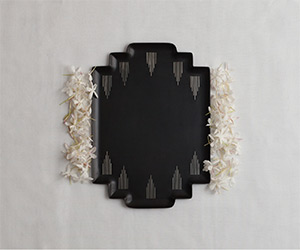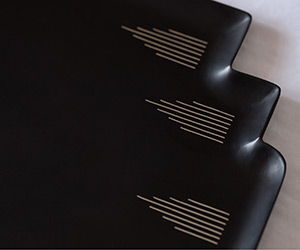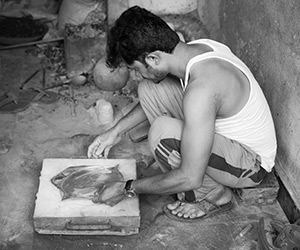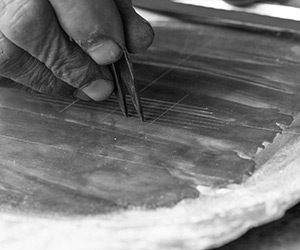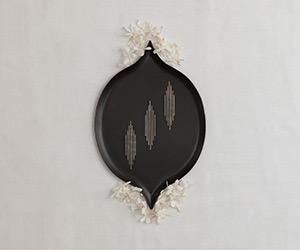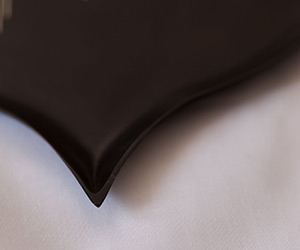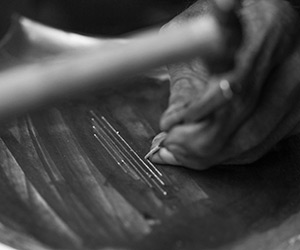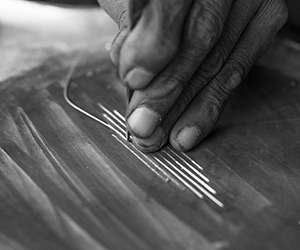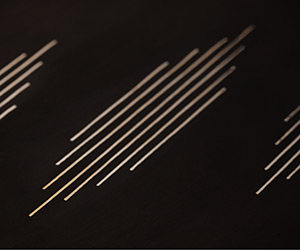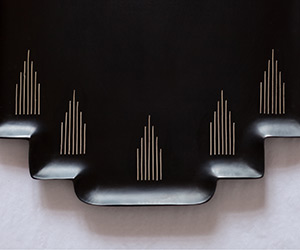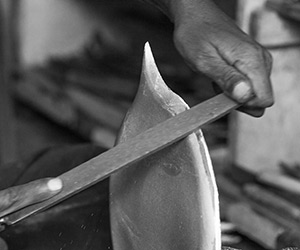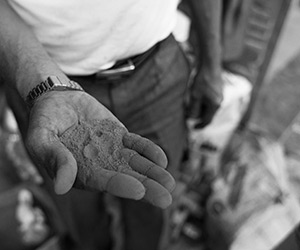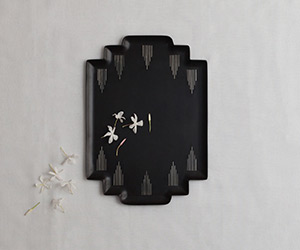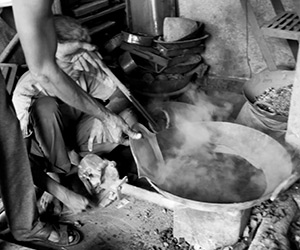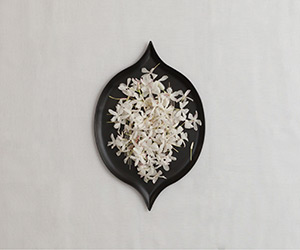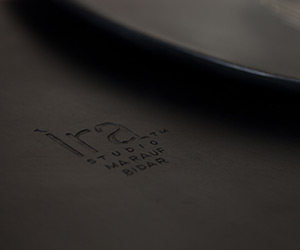BIDRI TRAYS
- Oxidised Zinc + Silver
- Agra L: 13.6: x B: 9.8”
- Fatehpur L: 13.5” x B: 8.7”
- Limited edition of fifteen
- Contact for Further Details
- Photo Credits: Sudhanva Atri
The first series of our Bidri collection draws on rich, historical inspirations of art, architecture, and craft from the Mughal, and Bahmani dynasties. Agra and Fatehpur, two striking trays in two distinct designs have been crafted using Bidri techniques bringing together expressions of the past and present.
The Agra and Fatehpur trays feature delicate strands of pure silver inlaid on to a solid dark zinc base in simple linear patterns accentuating the geometrical shape of the trays. With a minimal approach, juxtaposing clean lines with bold shapes, the trays are entirely hand-made using complex techniques that require precision, care and control. The matte finish of the zinc offsets the gleaming silver creating a graceful contrast.
Our Approach
Setting its roots in Bidar in India, the craft of Bidri originated during the early 14th century under the Bahmani rulers. Deriving inspirations from the inlay techniques of Persian crafts, Bidri was developed with its own indigenous techniques and processes that became known for its unique matte black finish, which is only attainable from the mud found in certain parts of the Deccan region. When dipped in boiling slurry of this mud, the chemical composition present in it renders the zinc black. This feature makes the craft unique in its nature and geography.
The base is hand-cast in an alloy of zinc and copper after which it is abrased and polished in preparation for the inlay. Using fine chisels the pattern is engraved and the silver is deftly inlaid on to the base of the tray employing a technique known as Tarkashi.
The trays are distinguished for their simple design, clean lines and a refined elegance. With its palette of black and silver, we have approached this extremely ornate and decorative craft with a pared down aesthetic and modern interpretations.
Luxurious without being lavish, the trays will add a sophisticated elegance to your tableware.

